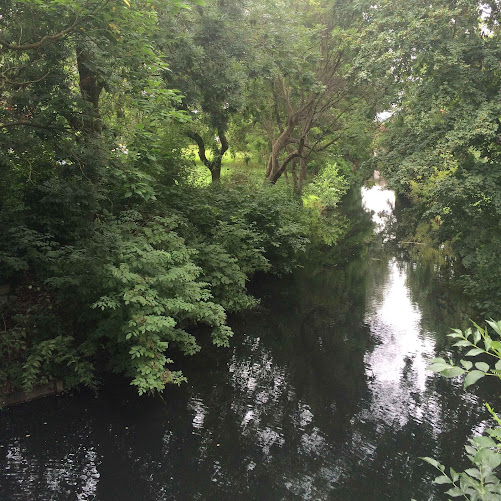James Brown
“Referencing
Troyon”, 2011
Oil on Canvas
Size: 80 x 100
cm
The beginning stage of this painting was a long way from how it finally ended up. Originally,
I thought I was going to make a painting featuring a stream that Isabelle and I
passed on our walk from the Bruges railway station to see Michelangelo’s “Madonna
of Bruges” (see photo taken at the time). I started work on the painting with the aim of capturing what I remembered of the overhanging trees. Sadly, my version that appeared on the canvas was more about me changing the stream to what rivers look like where Isabelle and I live in the hot and humid tropics
of Australia—with a strong leaning towards primeval wilderness. This was far from the slightly
manicured natural landscape of West Flanders. I had stumbled blindly without
looking into the reality that not all landscapes of the world will fit the
ready-made landscape template in my head.
Although the newly found knowledge that my vision of landscape would not fit with how streams look in Bruges, I was intrigued about what went wrong. The painting then took a very different direction. It was no longer going to be a tourist’s painting of what I had seen, but rather an exploration (probably more in my head than in the painting) of the difference between my tropical vision of a gentle bend in a stream and a similar stream shown in Francois Pierdon’s (1821–1904) etched translation of Constant Troyon’s (1810–1865) painting, “Metairie Normande” (Normandy Farm (https://www.britishmuseum.org/collection/object/P_1877-1013-1878). In short, I was comparing the attributes of a “civilized” stream that is open and accessible as shown in the etching with the extraction of anything that resembled human interference and with a natural barrier to accessing the stream in my painting.











No comments:
Post a Comment